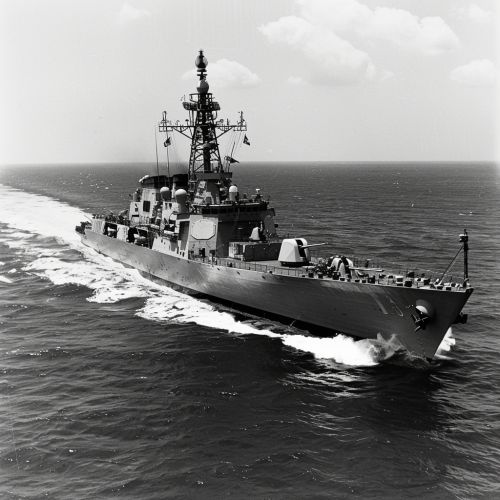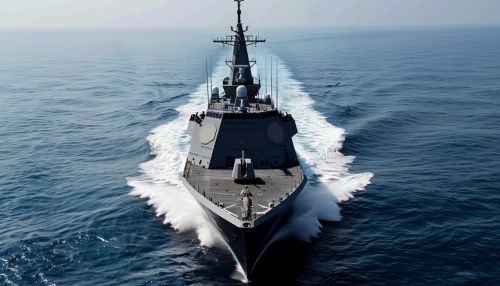Destroyer
Introduction
A destroyer is a type of warship, characterized by its speed, maneuverability, and offensive capabilities. The term "destroyer" was first used by the Royal Navy in the late 19th century to describe a class of torpedo-boat destroyers, designed to protect battleships from fast and agile torpedo boats. Over time, the role of destroyers has evolved to encompass a wide range of tasks, including anti-submarine warfare, anti-aircraft warfare, and escort duties for larger vessels.


History
The origins of the destroyer can be traced back to the development of the self-propelled torpedo in the late 19th century. The torpedo posed a significant threat to the large and relatively slow-moving battleships of the time, leading to the development of smaller, faster vessels capable of intercepting and destroying torpedo boats. These vessels, known as torpedo boat destroyers, were the precursors to the modern destroyer.
The first destroyers were relatively small and lightly armed, but they were fast and maneuverable. As technology advanced, destroyers grew in size and firepower. During World War I, destroyers were used primarily for escort duties, protecting larger vessels from submarine attacks. However, they also saw action in surface engagements, where their speed and maneuverability made them effective at harassing enemy formations.
During World War II, the role of the destroyer expanded further. In addition to their traditional roles, destroyers were now also used for anti-aircraft warfare, using their rapid-fire guns to shoot down enemy aircraft. They also took on a greater role in anti-submarine warfare, using depth charges and later, sonar, to hunt and destroy enemy submarines.
In the post-war period, the destroyer has continued to evolve, with the introduction of guided missile systems and advanced radar technology. Today's destroyers are among the most powerful and versatile vessels in any navy's fleet.
Design and Construction
The design of a destroyer is a complex process that involves a delicate balance between speed, firepower, and survivability. The hull of a destroyer is typically long and narrow, designed for high speed and maneuverability. The superstructure is kept as small as possible to reduce the ship's radar cross-section.
The armament of a destroyer varies depending on its intended role. Most modern destroyers are equipped with a combination of guns, torpedoes, and missiles. The guns are typically used for anti-aircraft and anti-missile defense, while the torpedoes and missiles are used for anti-ship and anti-submarine warfare.
The construction of a destroyer is a major undertaking, involving thousands of workers and several years of work. The hull is first laid down in a dry dock, after which the various systems and equipment are installed. Once the ship is complete, it undergoes a series of sea trials to test its performance and reliability.
Role and Tactics
The role of a destroyer in naval warfare is multifaceted. One of its primary roles is to provide escort for larger vessels, such as aircraft carriers and amphibious assault ships. In this role, the destroyer uses its speed and firepower to protect the larger vessel from threats such as submarines, aircraft, and enemy ships.
In addition to its escort role, a destroyer can also be used for offensive operations. Its speed and maneuverability make it an effective platform for launching attacks against enemy vessels, while its advanced sensors and weapons systems allow it to engage targets at long range.
Tactically, destroyers rely on their speed and agility to evade enemy fire, while using their own weapons to engage the enemy at range. They also make use of their advanced sensors to detect and track enemy vessels, allowing them to engage the enemy before they themselves are detected.
Modern Destroyers
Modern destroyers are among the most technologically advanced vessels in the world. They are equipped with state-of-the-art radar and sonar systems, advanced missile systems, and powerful guns. They also feature sophisticated electronic warfare systems, designed to jam enemy radar and communications.
One of the most notable examples of a modern destroyer is the U.S. Navy's Arleigh Burke-class. These ships are equipped with the Aegis combat system, which allows them to track and engage multiple targets simultaneously. They are also armed with a variety of weapons, including Tomahawk cruise missiles, Standard anti-aircraft missiles, and a 5-inch gun.
Other notable modern destroyers include the Royal Navy's Type 45 or Daring-class, the Russian Navy's Sovremenny-class, and the People's Liberation Army Navy's Type 052D or Kunming-class.
